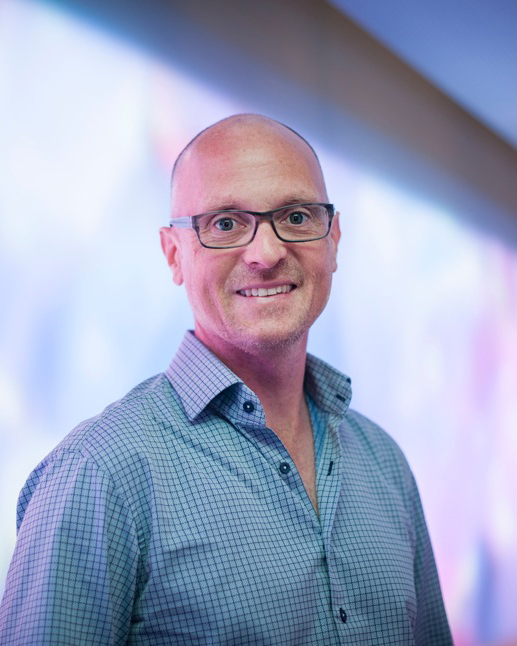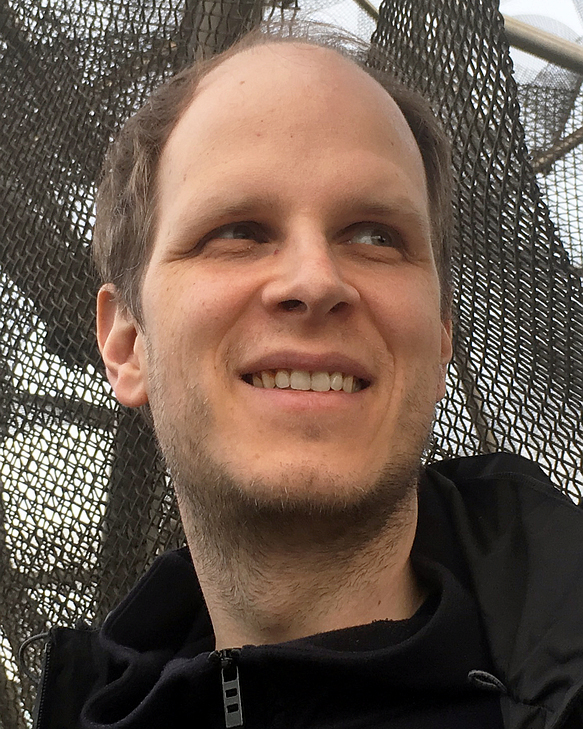Invited Speakers
Keynote: Drew Berry

Your respiration engines: real-time visualisations of dynamic molecular landscapes
After 20 years of generating animations with slow, expensive rendering pipelines for movie production, WEHI.TV has switched to the extraordinary power of GPU hardware and accelerated game engines for generating vast, detailed molecular and membrane landscapes inside our living cells. Drew Berry will present the latest experiments producing cinematic movie sequences and real-time interactive ‘3D diorama’ open-world scenes of mitochondria membranes and molecular engines that underlie the conversion of the food we eat into chemical energy for our cells. From 2017 WEHI.TV adopted and expanded upon the cellVIEW system to create a custom Maya to Unity pipeline that efficiently delivers real-time, multi-scale animated molecular worlds, to create interactive storytelling and meaningful experiences.
Drew Berry is a biomedical animator who creates beautiful, accurate visualisations of the dramatic cellular and molecular action that is going on inside our bodies. Beginning his career as a cell biologist, his raw materials are technical reports, research data and models from scientific journals. As an artist he works as a translator, from abstract and complicated scientific concepts into vivid and meaningful visual journeys. Since 1995 he has been a biomedical animator at the Walter and Eliza Hall Institute of Medical Research, Australia. His animations have exhibited at venues such as the Guggenheim Museum, Museum of Modern Art, the Royal Institute of Great Britain and the University of Geneva. In 2010 he received a MacArthur Fellowship ''Genius Grant''.
Links
- WEHI animation library
- TED talk
- Drew Berry Wikipedia
- Björk 'Hollow' music video
- 'Virus one billion times’ architectural projection State Library of Victoria, White Night Melbourne 2014
Recognition and Awards
- Honorary Doctorate of Technology, Linköping University Sweden, 2016
- MacArthur Fellowship, USA 2010
- New York Times “If there is a Steven Spielberg of molecular animation, it is probably Drew Berry.” 2010
- The New Yorker “[Drew Berry’s] animations are astonishingly beautiful” 2008
- American Scientist "The admirers of Drew Berry, at the Walter and Eliza Hall Institute in Australia, talk about him the way Cellini talked about Michelangelo." 2009
- Nature journal’s Niche Prize, UK 2008-9
- Emmy for DNA documentary series by Windfall Films, 2005
- BAFTA award for DNA Interactive DVD by RGB Co, UK 2004
Highlight Exhibitions and Productions
- 'Mendel: The Legacy' architectural projection show, Czech Republic 2015
- 'Virus one billion times' White Night Melbourne, State Library of Victoria 2014
- 'E.O. Wilson's Life on Earth' iPad interactive textbook 2011–2014
- Pixar University presentation, San Francisco 2013
- Vivid festival presentations, Museum of Contemporary Art, Sydney 2013, 2014, 2015, 2016, 2017
- TED.com top ten presentation in the "Jaw Dropping" category 2012
- Apple Inc presentation, Cupertino USA 2012
- Google SciFoo, San Francisco 2012
- Björk's Biophilia iPad App and 'Hollow' music video 2010
- University of Geneva’s Genome Dome exhibition, Switzerland 2009-10
- Guggenheim Genes and Jazz with Harold Varmus, USA 2008-9
- The Royal Institution of Great Britain installation, UK 2008-9
- Shanghai Zendai Museum of Modern Art Strange Attractors exhibition, China 2006
- Museum of Modern Art Premieres exhibition, USA 2004-5
Capstone: Daniel Sýkora

Artistic Style Transfer Demystified
Example-based style transfer became recently popular thanks to significant advances made by neural-based approaches as well as guided patch-based synthesis. The hype around deep neural networks is so intense that it makes many people believe neural-based techniques will soon replace traditional patch-based methods. However, the situation is not as optimistic as it might look like on the first sight. In this talk, we analyze in detail pros and cons of both directions and reveal fundamental limitations which might not be directly apparent. Those will lead us to an observation that a promising avenue for further investigation lies in a careful combination of both approaches. We demonstrate first promising attempts in this new direction.
Daniel Sýkora is an Associate Professor at the Department of Computer Graphics and Interaction, Faculty of Electrical Engineering, Czech Technical University in Prague where he also received his MS (2003) and Ph.D. (2007). He gained further research experience abroad at Trinity College Dublin, Walt Disney Animation Studios, and the University of Utah. Daniel's scientific career stems from his long-standing passion for traditional artistic techniques. He developed numerous algorithms that can eliminate repetitive and time-consuming tasks while still being able to preserve the uniqueness of handcrafted artwork and provide full creative freedom to the artist. Daniel and his team at CTU in Prague intensively cooperate with renowned industrial partners such as Adobe, Disney, or TVPaint Development. Some of the techniques they developed were already integrated into professional products and used in production. For his contribution, Daniel received numerous scientific awards including prestigious Günter Enderle Best Paper Award and The Neuron Award for Promising Young Scientists. More information about Daniel and his work can be found here.